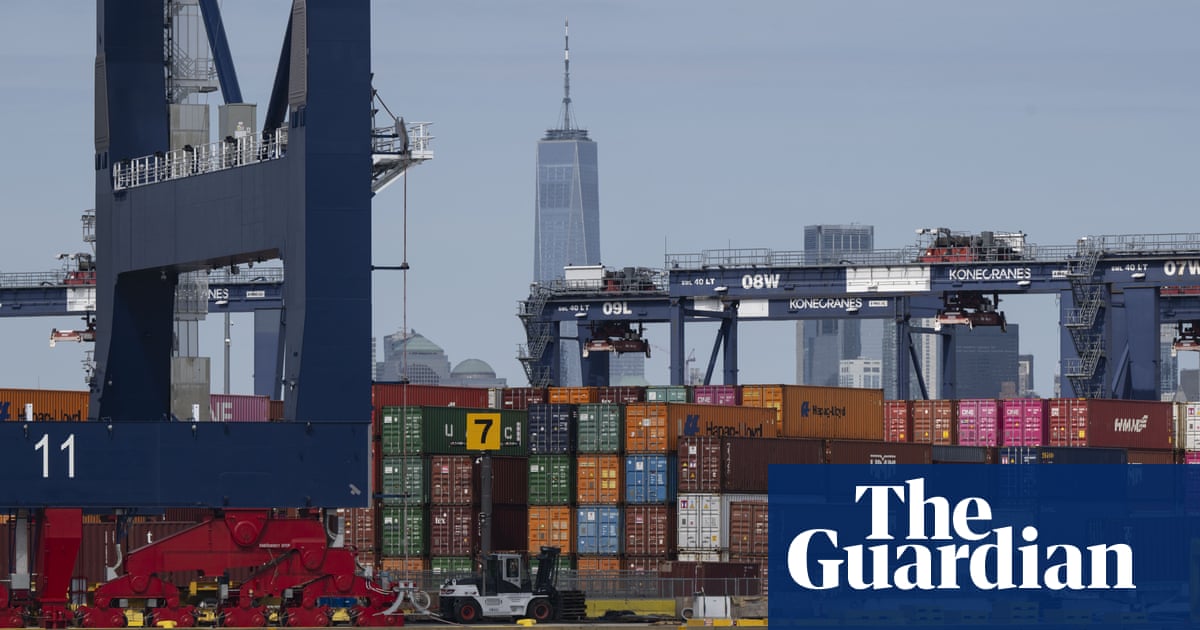Sydney businessman Robert Jarmyn had a $250,000 shipment of skincare products en route to the US from China when Donald Trump declared hisnew tariffs regimeat the start of April.
When he received the invoice for that shipment, it had an additional cost whacked on top: $125,000, simply labelled “Trump tariff”.
“It was pretty devastating, the blood pressure went up,” Jarmyn says. “It was like, ‘Well, what do we do now?’”
Higher levies on products coming from China have forced Jarmyn’s skincare business, Blaq, to pause exports. “I just haven’t put anything on the water since,” he says.
About 2 million American customers buy his products but current tariffs would send the retail price of a Blaq face mask from $29 to nearly $80. “No one would buy that,” Jarmyn laments.
Blaq is one of about 12,000 Australian businesses that sell to the US. Those selling Australian-made goods now have to pay duties of 10%, while companies relying on Chinese manufacturing, like Blaq, face a whopping 145% tariff.
A month on from Trump’s “liberation day” announcement, Australian exporters are trying to work out how to stay afloat. Some are closing, others are finding new export markets, and some are profiting from the chaos. Many are holding their breath, in anticipation of more trade changes.
Tariff uncertainty, sparking fears of higher costs and lower US sales, threwlocal businesses and investors into a spin. The share market shed nearly $200bn in value in less than a week, as the benchmark S&P/ASX 200 slid 8%.
Those losses have since been recovered, helped by a growing realisation that the direct impact of the tariffs on local companies would be limited.
While the US is the primary market for Jarmyn’s Blaq, American customers are just one of many for companies like Tyrrell’s Wines.
The company’s general manager, Bruce Tyrrell, sold tens of thousands of cases annually to the US in the 1990s, but that’s fallen to less than 3,000.
“You never move away from the US, but it’s probably not going to be number one priority,” the fourth-generation winemaker says.
Americans bought $24bn worth of Australian goods in 2024, less than India and South Korea, while Japan bought triple that figure and China seven times as much,Australian Bureau of Statisticsdata shows.
According to a Westpacanalysis, the tariffs may barely even touch firms selling agricultural or mining goods to the US, though manufacturers and beef farmers are more vulnerable.
Despite the market frenzy, the tariff regime isn’t expected to deal direct damage to Australia’s economy in the short term, Stephen Smith, partner at Deloitte Access Economics, says.
“That might appear counter-intuitive … [but] only around 4% of Australia’s goods exports by value flow to the US, meaning the direct impact of the 10% tariff applied to Australia is likely to be immaterial,” Smith wrote in a recent note.
The bigger risk for local businesses from the collapse of an 80-year global consensus and an ongoing trade war between the US and China is crumbling confidence around the world – “a cause for deep concern,” Smith added.
Trump first threatened tariffs as high as 49% around the world thendeferred those until after June, leaving most countries on the 10% rate. Uncertainty over future tariff rates hasshaken market faith in the USand will threaten global growth, the International Monetary Fundhas warned.
Tyrrell, who started selling to Americans when Richard Nixon was president, says he will now be focusing on new Asian markets.
“[Trump] could stand up tomorrow and say, ‘No imported wine, we’ve banned the lot,’” he says.
Sign up toAfternoon Update: Election 2025
Our Australian afternoon update breaks down the key election campaign stories of the day, telling you what’s happening and why it matters
after newsletter promotion
The IMF in Aprilslashed its forecastsfor economic growth in Australia, the US andaround the world. Data at the end of April showedAmerica’s economyhad already shrunk in the months before broad tariffs were even announced, triggering fears of a US recession.
While many businesses across the world are struggling to adapt to the chaos, West Australian businessman Mark Chapman says he’s “struggling to see a downside”.
Chapman’s skincare company Clean and Pure had stopped selling its lip balms and sunscreens to the US after the pandemic. But it is hurrying its products back into the US as tariffs disrupt bigger competitors like Nivea and Burt’s Bees.
“It’s exciting, because the big, dominant corporations are scrambling, and while they scramble and move at the speed of a glacier, we get in there,” he says.
In June, Chapman’s colleagues will be in Texas setting up a Clean and Pure warehouse. They’ll be joining fellow Australian Andrew Coppin, the co-founder of tech company Farmbot, who is counting his lucky stars he moved to Fort Worth last year to set up a factory for his growing American customer base.
“It was sort of fortuitous that we did that, and it was cheaper to build some things locally,” Coppin says. “The potential here is enormous.”
Blaq has also been trying to start making its skin creams and masks in the US, but nearly 20 American manufacturers have refused to take them on, either because it’s outside their ability or because the tariffs on China make it prohibitively expensive.
Without new producers outside China or new markets outside the US, Jarmyn’s best hope isTrump’s suggestionthe mega-tariff on China may drop.
“There’s no way in the world it could viably stay at that level,” Jarmyn says.
But if it does, he’ll have a decision to make in June.
Unlike Clean and Pure’s Chapman, he won’t be looking to level up his US business, but to pull the plug altogether.
“I’m hoping something happens by the end of June. If it doesn’t, then it does mean that I really do have to make a pivot pretty quickly.”
